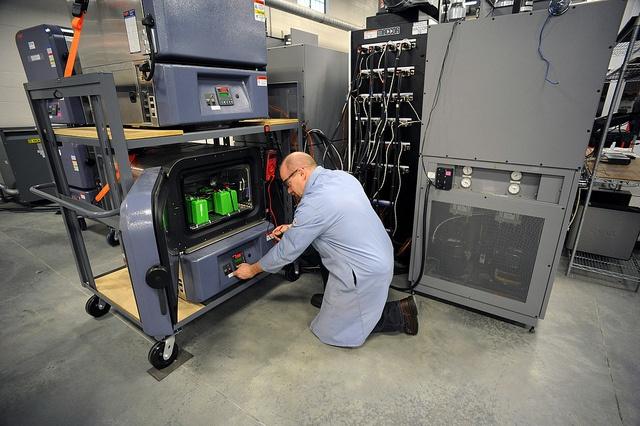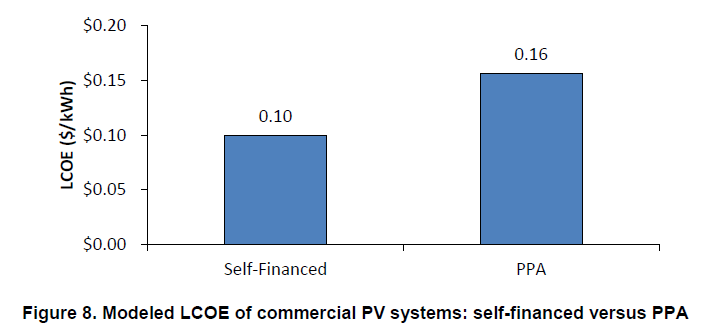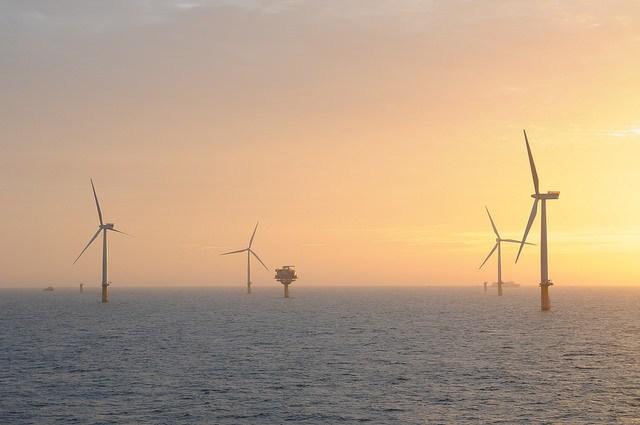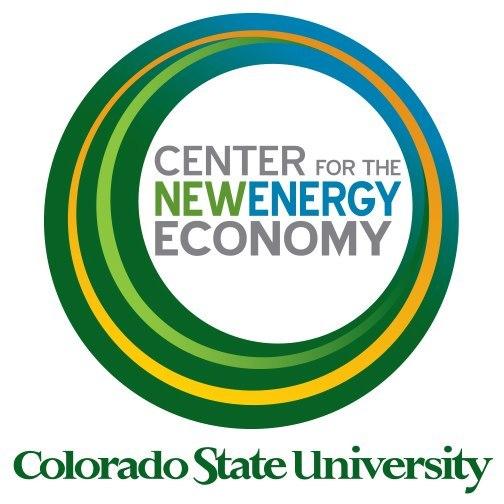Calculating the True Cost of Energy Storage


By Anna W. Aamone
With regard to energy storage systems, many people erroneously think that the only cost they should consider is the initial – that is, the cost of generating electricity per kilowatt-hour. However, they are not aware of another very important factor.
This is the so-called LCOE, levelized cost of energy (also known as cost of electricity by source), which helps calculate the price of the electricity generated by a specific source. The LCOE also includes other costs associated with producing or storing that energy, such as maintenance and operating costs, residual value, the useful life of the system and the round-trip efficiency. Some of these factors will be discussed in this article, so if you want to get a solid grasp of the matter, check the information provided below.
Batteries and round-trip efficiency
Let's begin with saying that using batteries to store energy may be a costly adventure. The basic reason is that, due to poor maintenance, inefficiencies or heat, part of the energy captured in the battery is released ... or rather, lost. The idea of round-trip efficiency is to determine the overall efficiency of a system (in that case, batteries) from the moment it is charged to the moment the energy is discharged. In other words, it helps to calculate the amount of energy that gets lost between charging and discharging (a “round trip”).
In other words: You charge your battery, believing you will use 100 percent of it, but the truth is that you will only get to use about 75 percent due to loss of energy somewhere along the way. It's just inevitable. Roughly speaking, you can only release about 75 kilowatt-hours from a battery that has been charged with 100 kWh of electricity. Those 25 kWh of electricity get wasted for a number of reasons like the ones mentioned above (heat, improper maintenance, etc.). Are you getting the idea? So, as it turns out, using batteries is not free either. And it has to be added to the final cost of the energy storage system.
Maintenance costs
The next thing that customers keep forgetting is that paying for an energy storage system is definitely not the first and the last time they will need to give money away for that system. When calculating the true cost of energy storage you have to include maintenance costs. An energy storage system requires regular check-ups so that it operates properly in the years to come. Note that keeping such a system running smoothly can be quite pricey. Some batteries need to be maintained more often than others. Therefore when considering buying an energy storage system, you need to take into account this factor. It will help you calculate the true cost of the system and save you a bunch of headaches in the long run.
Useful life of the energy system
Another important factor in determining the true cost of energy storage is a system's useful life. Most of the time, this is characterized by the number of years a system is likely to be running. However, when it comes to batteries, there is another factor to take into account: use. The truth is, batteries wear out due to use and time. More often than not, the life of a battery depends on the number of charge and discharge cycles it goes through. Imagine a battery has about 10,000 charge-discharge cycles. When they are complete, the battery will wear out, no matter if it has been used for two or for five years.
The good news is, flow batteries can be charged and discharged a million times without wearing out. Hence, cycling is not an issue with this type of battery, and you should keep this in mind before selecting an energy storage system. Think twice about whether you want to use batteries that wear out too quickly because their useful life depends on the number of times they are charged and discharged. Or would you rather use flow batteries, the LCOE of which is much lower than that of standard batteries?
So, what do we have so far?
LCOE = Round-trip efficiency + maintenance costs + useful life of the energy system.
These are three of the most important factors that determine the LCOE. Make sure you consider all the factors that determine the true cost of energy storage systems before you buy one.
Image credit: Flickr/INL
Anna W. Aamone works for TopDomesticCleaners Crofton Park. She likes to spend her free time at quiet places like small local cafés or playing chess in the near park.
Will China’s Mining of the Moon Make It the Indisputable Global Power?


China is close to becoming the third country, after the United States and Russia, to land spacecraft on the moon. As a result, the blogosphere has been buzzing with one of the reasons why the Chinese have apparently decided to invest in space exploration: to explore the possibility of the isotope helium-3, rare on Earth but possibly plentiful on the moon, in order to research its viability as a clean and powerful form of energy.
Such potential is a reminder of the movie "Avatar," the premise of which was based on humans traveling long distances across space to exploit valuable natural resources from a planet in order to meet the insatiable needs for humankind.
In the case of Chinese moon exploration, the reason is to test the viability of helium-3 as a perfectly secure form of energy. For years the buzz was that cold fusion could solve Earth’s energy conundrum without the nasty effects of pollution and greenhouse gasses. That hype has long died down, but now helium-3 could be that Holy Grail. The oft-quoted claim bouncing across the Internet suggests that 25 tons of helium-3, when reacted with deuterium, would generate enough electricity to power the United States for one year.
Considering the wars over oil and the challenges that renewables pose, you'd think it would be easy to make the case that we should be hauling lunar rocks from the moon, extracting the helium-3 and solving all of our energy problems. After all, the Chinese are looking into it, so shouldn’t we? One author suggests the U.S. would do it, too, but powerful corporate and political interests are getting in the way.
If it were only that simple.
Considering the enormous economic lift and unrivalled power any country would enjoy if they had a resource like helium-3, the reality is that if this were a viable, cost-effective option, we would have long been sending next-gen and future-gen Apollo spacecraft to the moon by now. Conspiracy theorists who insist the oil companies control everything may dismiss such a logical and even simplistic opinion, but to quote"House of Cards" protagonist Francis Underwood: “Money is the McMansion in Sarasota that starts falling apart after 10 years. Power is the old stone building that stands for centuries.”
In other words, the ability to generate the kind of power helium-3 would generate would untie the U.S. from the risks associated with volatile energy prices, weaken our perceived enemies and rivals who supply us much of our energy, and free up money that could be invested in other sectors. The unsurpassed power gained from such a find would also make the contractors involved filthy rich — if it were a viable option.
Yes, helium-3 is abundant on the moon because solar winds have allowed this isotope to gather on the moon’s surface, while Earth’s magnetic field has deflected this potentially valuable energy source away. But researchers suggest the amount of helium-3 on the moon's surface is only 50 parts per billion, which would require millions and millions of moon dust and rocks to be harvested. Such a task would make strip mining on Earth look as tame as building a raised garden bed. And it would require a constant stream of spacecraft, such as the mothballed U.S. Space Shuttle fleet, to fly to and from Earth and the moon with the frequency of planes departing hubs such as London’s Heathrow and Dubai.
Never mind the amount of fuel that would be consumed and carbon emitted in order to transport all that material back to Earth — the cost alone is far too prohibitive for any nation at this point. All eyes were on Russia several years back when a company promised a lunar base by 2015 and to start mining for helium-3 by 2020, but those plans were delayed indefinitely.
Finally, while the scientific community has rallied around the risks of climate change, the same has not occurred over the potential of helium-3. There is hardly any consensus about helium-3’s potential, as only some scientists believe it could have a role in meeting the Earth’s surging energy demand. While it makes great headlines, as helium-3 has achieved in publications like the Daily Mail (which makes much of its coin from fomenting celebrity rivalries between the likes of Jennifer Lopez and Kristen Chenoweth), the chances this isotope can transform the world is about as great as finding all of its molecules that exist on Earth.
The only conspiracy preventing helium-3 from solving our energy needs is one between cost, logistics and science, and for now it only makes for fantastic speculation. The Chinese space program is nowhere near burying the rest of the world just yet.
Image credit: G.H. Revera
Based in California, Leon Kaye has also been featured in The Guardian, Clean Technica, Sustainable Brands, Earth911, Inhabitat, Architect Magazine and Wired.com. He shares his thoughts on his own site, GreenGoPost.com. Follow him on Twitter and Instagram.
Solar PV: Own or Lease?


Solar leases and power purchase agreements (PPAs) have supercharged installation of residential photovoltaic (PV) energy systems in the U.S. At least this is the case in states such as Arizona, California, Colorado, Massachusetts, New York and others where energy industry regulators permit them to be offered.
Due to a variety of factors, including the scheduled ratcheting-down of the federal solar investment tax credit (ITC) at the end of 2016, U.S. solar energy finance-and-installation companies, such as market leader SolarCity, are increasingly turning to solar loans as a means of financing, however.
In two new reports, the U.S. Department of Energy's National Renewable Energy Laboratory (NREL) compares the costs and benefits of financing PV installations via third-party ownership (leases and PPAs) and direct ownership via solar loans and low-cost financing.
Financing solar PV: Loans or leases?
Comparing the total costs of alternative means of financing the installation of home and business PV systems, NREL energy analysts found that in general those who use low-cost financing to purchase their PV systems -- or do so by taking out solar loans -- can save as much as 30 percent compared to leasing them via third-party providers.
"Market interest rates on solar-specific loans currently range from 2 percent with special provisions to 8 percent," Travis Lowder, energy analyst and one of two co-authors of NREL's Banking on Solar: An Analysis of Banking Opportunities in the U.S. Distributed Photovoltaic Market, elaborated.
“Compare this to a weighted average cost of capital of 9 to 10 percent for third-party systems financed through tax equity investments. Using the lower cost rates provided by the loans could help to make solar power more affordable to more consumers, and more competitive with utility rates in more states."
According to this NREL report, which Lowder co-authored with NREL senior analyst David Feldman:
- The levelized cost of energy (LCOE) for residential systems with solar loans was lower than the LCOE for residential systems with power purchase agreements (PPAs) by 19-29 percent (varying by the term of the loan), because of the higher cost of capital necessary for the sponsor and tax equity in a PPA transaction;
- There are additional operational and financial risks associated with owning a solar asset, and many of the savings calculated depend on market environment and the specific situation of an individual homeowner or business. For example, changes in a homeowner's credit rating and the term of the loan can more than double the interest rate payments on the loan.
Solar financing among U.S. retail chains
In a second new NREL report, co-authors Feldman and Robert Margolis lay out and analyze the trade-offs between financing methods for businesses installing onsite PV systems. In To Own or Lease Solar: Understanding Commercial Retailers’ Decisions to Use Alternative Financing Models, Feldman and Margolis present case studies of PV financing strategies used by Ikea and Staples, both of which are leaders among U.S. businesses installing solar PV systems.
Ikea owns it PV systems, whereas Staples leases them via PPAs and third-party providers. Key takeaways from this report include:
- The LCOE (levelized cost of energy) for the modeled self-financed system is approximately 30 percent lower than the LCOE for the PPA-financed system, given a commercial customer's pre-tax discount rate of 10 percent; however the LCOEs are equivalent when the discount rate rises to 23 percent;
- Companies may view the risks of ownership differently than those for a PPA-financed system. If a company assumed a 10 percent pre-tax discount rate for a PPA versus a 23 percent pre-tax discount rate for self-financing, then the LCOE would be 14 percent lower using the PPA.
"The most appropriate PV financing option for a particular business depends on the characteristics and circumstances of that business. A company must work across its different business groups to decide what is most appropriate for its situation,” Feldman, a senior analyst at NREL, commented.
“With that said, if a company has less expensive sources of financing and is comfortable with the risks, it can often save on its energy bills by owning a PV system."
*Image credits: 1) Vivint Solar; 2, 3 & 4) NREL
Why This Top College Apparel Company Pays Living Wages


As college football season drew to a close, fans were certainly more fixed on the final score of the championship than on the “made in” label on the back of their college T-shirts and hoodies. Take a closer look at your (or your kid’s) college sweatshirt, though, and you’ll discover a college apparel company with values at its core.
In an industry that manufactures most of its apparel in developing countries that pay garment workers a little more than subsistence wages, Alta Gracia Apparel – a clothing factory in the Dominican Republic that pays employees 300 percent above the legal minimum wage – is a one-of-a-kind social enterprise.
Through a partnership with Follet Corp., one of the nation’s largest campus retailers, Alta Gracia Apparel makes college T-shirts, sweaters and sweatshirts for more than 350 U.S. colleges. Alta Gracia gear is sold in more than 800 college bookstores across the country.
The four-year-old company, owned by South Carolina-based sports apparel giant Knights Apparel, is the only apparel factory in a developing country to pay workers a living wage, maintain high health and safety factory conditions, and negotiate a collective bargaining agreement with a workers’ union. And all of these accomplishments have been verified by the independent labor rights organization Worker Rights Consortium.
“Paying 300 percent higher wages certainly doesn’t make sense on face value, but from a business standpoint we think there’s a growing consumer base … that wants to know that their purchasing power is supporting to make positive change in the world,” said Joe Bozich, founder and CEO of Knights Apparel and Alta Gracia. “From a personal standpoint, I need to know that my business and life’s work is doing more than just make a profit.”
The average daily wage for a worker in the Dominican Republic is $8, yet Alta Gracia pays its employees $3 dollars an hour, a living wage that enables workers to provide food, housing, healthcare and education for their families. Consider that the average hourly wage for garment workers is about 24 cents in Bangladesh, 45 cents in Cambodia, 53 cents in Vietnam, and $1.26 in China, and you get the picture of how Alta Gracia’s unconventional approach compares with the global apparel industry.
While paying higher wages increases the factory’s production costs by 20 to 30 percent, the company is committed to this salario digno (“wage with dignity”) business model, because it meets workers’ basic needs and, in turn, workers are committed to the company’s success.
Case in point: The company has seen that workers are more productive, pay greater attention to quality control and remain at the company for much longer than the industry average. According to a 2012 Fair Labor Association survey of 39 supplier factories in 13 countries, the average annual turnover rate in apparel factories is 67 percent, whereas Alta Gracia’s turnover rate is about 6 percent.
The company also ensures that part-time and temporary workers also receive a living wage, and, unlike other garment factories, workers are not furloughed when purchase orders decline.
Breaking even in 2014, the company expects a profitable year to come. With a recent deal struck with the National Hockey League to make sports apparel for its teams, combined with a growing swell of college students asking for more socially-responsible apparel brands, Alta Gracia hopes to validate its business model and prove that paying workers a living wage and respecting workers’ rights is good for business.
Image courtesy of Alta Gracia Apparel
Marketing for Good: The (Often Overlooked) Power of Design


Editor's Note: This is a recurring series of excerpts from Marc Stoiber's new book, “Didn’t See It Coming."
By Marc Stoiber
I’ve made a career of connecting dots. Working in advertising, design, sustainability and innovation, I’ve found myself in the interesting position of being a conduit between disciplines that often didn’t communicate or share terribly well.
But if we’re going to change the world, we desperately need to share.
In that spirit, I have a few observations on design – a field we should pay far more attention to if we’re going to bring more consumers aboard the good ship Sustainability.
Good design makes complicated things simple. Great design does it while inspiring us. Think of the first time you spun an iPod thumb wheel and realized you wouldn’t need instructions to figure this thing out. Or the first time you looked at a Prius’s mileage screen and understood how easing off the gas at green lights would boost your mileage — again, without instructions. These experiences stop us in our tracks with the realization there are smart people out there using their powers for good.
A short while ago, I was lucky enough to stroll through the new international terminal at LAX. In my humble opinion, this place takes the design cake. Airports are generally anxious places, full of people pretending to be busy on their phones and tablets, their daily dose of tech irritation amplified by the frustrations that come with air travel. But in Los Angeles, I didn’t see fast-walking, anxious people. Instead, I saw many of us (my family included) looking up at the incredible design pieces and art — 3-D projected clocks and glockenspiels, massive virtual lutes you could pluck as you walked by, countless little visual wonders that reminded us we were in the city of dreams. We put away the phones, sat back and smiled, even slowed down to play a bit. Heck, the check-in counter could wait.
I believe design’s power to simplify and humanize can do more than buffer the intimidation of technology or sustainability. It also presents a common language for our hyper-connected global village. With this language comes communication, understanding and shared experiences — the building blocks of a common culture.
Think about your last trip to a foreign country where you didn’t speak the language. How did you ask for the bathroom or convey what you wanted on the menu? Most likely with a bit of amateur mime.
Not only did you get what you wanted (well, most of the time), but you probably also raised a smile with your hosts. Where there had been mild mistrust and tension, there was now the flickering of shared humanity, a bond.
Design is mime. It conveys meaning without words. It creates bonds instead of barriers.
Design is a common language – and, in my opinion, a far better language than any we speak.
I’m often called in on tech projects – launching new companies, or revamping existing ones. My job invariably boils down to making the language of tech intelligible and attractive to an audience that doesn’t speak tech (or give a monkey’s uncle to learn the ‘insider’ language).
Similarly, on sustainability marketing projects, I’m usually brought in to translate ‘green’ to a consumer – no small feat. Remember, ordinary folks don’t snap to attention if you casually mention linear production.
My solution in these situations? Invariably, I end up augmenting written words with iconography and symbols — a language understood by everyone, a language easy to embrace.
I believe we live in a post-literate society, where writing inhibits uptake, creates frustration and leads to rejection of the message. Instead of stoking warm feelings around our clients’ products, language can often cause people to switch off.
Nathaniel Hawthorne famously said, "Easy reading is damn hard writing." I’d argue from experience that the easiest form of reading, design, makes for the hardest work of all. But the psychological rewards make it a top priority for brands trying to future-proof themselves.
Keep a lookout for more excerpts here on TriplePundit!
Image courtesy of the author
Marc Stoiber is a brand consultant, entrepreneur, and writer. He knows how to connect dots, simplify, and add a creative twist to the most mundane things in life. Even insurance and diet bars. He has worked in the corner office, the basement, and at coffee shops around the world. His work - even the legitimate stuff clients paid for - has been recognized by virtually every international industry award for advertising and design. Marc writes on brand innovation for Huffington Post, Fast Company, GreenBiz and Sustainable Life Media. He also speaks on the subject from coast to coast, and has been featured at TEDx.
U.N. Global Compact Expels Hundreds for Non-Compliance


2014 was a mixed year for the United Nations Global Compact (UNGC) initiative, which has been working to increase the adoption of sustainable practices in the global business sector.
The organization announced last week that it had expelled 372 companies in the last half of 2014 for not submitting their Communication of Progress (COP) reports, which members are required to submit on a yearly basis. The COP details the member's progress in meeting the 10 goals of the UNGC. So far, the number of expelled companies for 2014 stands at 657.
"These expelled companies represent 10 percent of the 3,760 participants due to submit a Communication on Progress (COP) within the second half of 2014," said the UNGC, which pointed out that the organization also took on 729 new members in the last half of 2014.
The U.N. Global Compact was established in 2004 to promote sustainable practices in the workplace. Its 10 principles set the framework for the company's adherence to human rights, labor, environment and anti-corruption practices, all of which the UNGC states are necessary components of a sustainable business.
At the end of 2014, the initiative had a total of 8,378 members. According to organization, the majority of these members (4,747) are small-to-medium companies with 10 to 249 employees, while 3,681 comprise large corporations of 50 or greater (including 11 percent that have 5,000 to 49,999 employees and 3 percent that have an employee base of greater than 50,000).
Of the 6,105 that provided financial information about their companies, the majority (71 percent) reported revenue under $50 million, suggesting that small-to-medium companies are currently the largest driving force to the U.N.'s sustainability initiative.
Yet a glance at where the U.N. Global Compact's membership resides suggests that is not always the case: While participation in the European Union outpaced membership in the Americas by more than 2 to 1, large corporations made up the bulk of the membership in both areas.
The disparity between these two groups of statistics (how many small-to-medium businesses are members and where they reside) may be due in part to the fact that even though the UNGC requires reporting on a yearly basis, 3,280 members had not reported by the end of 2014.
There has been some criticism of the UNGC and its reporting requirements in past years. Jette Steen Knudsen, an associate professor from Copenhagen Business School, noted in a 2011 article in European Business Review that some critics have charged that the UNGC's membership is "primarily suitable for larger firms that can use the Compact to fill a governance void as they operate in less developed countries." Small and medium businesses, she said, don't always have the resources behind them to benefit from being members.
Additionally, "firms that produce and sell their goods and services in countries with efficient government regulation" don't always see the benefit of joining this initiative.
In 2011, Knudsen said, the UNGC proposed a new "Differentiation Program with less-strenuous expectations for SMEs." Still, companies are often "left to their own devices in terms of reporting," a problem that may explain why 10 years after the implementation of the initiative, there is still a significant number of companies being expelled for non-compliance.
To be fair, the UNGC allows new members up to two years to submit their first-year COP. But, as Knudsen noted in 2011, the expulsions suggest that even though companies join with a commitment to sustainable principles, the path that is set doesn't always yield compliance. In order for sustainable principles that endorse basic concepts like human rights, labor practices, environmental stewardship and the absence of corruption in a company's operations to be accepted globally, the mechanisms for attaining those goals have to be able to be met by everyone.
Image credit: U.N. (Wikipedia Commons)
Dubai: A City That Answers Its People


Editor’s Note: As a lead-up to Abu Dhabi Sustainability Week, Jan. 17-24, Masdar sponsored a blogging contest called “Describe the Ideal City in 2030.” The following post was a runner-up.
By Christina Thomas
“You take delight not in a city’s seven or seventy wonders, but in the answer it gives to a question of yours.” – Italo Calvino, "Invisible Cities"
Dubai certainly has its share of wonders and answers. Shellstone minarets and glass skyscrapers once symbolized the city’s tenacity in contest with the harsh desert. But in the years leading up to 2030, Dubai has come closer to reconciling with nature and responding to environmental concerns.
The city has also been answering the many questions continually posed by its millions of residents. Some ask, “Where can my children play?” “Why are the streets flooded whenever we get an inch of rain?” Others ask, “Do they sell local vegetables nearby?”
As an urban planner, my job is to make sure that the city can provide many of those answers, be it though green parks maintained with recycled water or porous roads and sidewalks that collect runoff.
In my workplace, “transit oriented development” has been the catchphrase lately. This means expansion and integration of Dubai’s metro, tram and bus services. Mixed-used zoning has ensured that office spaces and essential services are not too far from residential areas.
It’s a relief to take the tram to work and not worry about road traffic anymore. But even those who drive have reason to be glad. Solar-powered charging stations have cropped up everywhere since car manufacturers began converting or retrofitting vehicles to make plug-in hybrids an attractive low-cost option for car owners.
Contrary to many initial fears, these changes haven’t hurt Dubai’s economy, which was previously heavily oil-dependent. Dubai’s new reputation as a hub for sustainable infrastructure and solar energy innovation has spurred enormous demand for green jobs.
Tourists flock here, too, to marvel at the distinct charm of the city’s public spaces. Arabesque facades and windcatchers incorporate traditional elements of local architecture to promote passive cooling in buildings and streets. Aside from consuming less energy, many of the newer buildings act as carbon sinks due to the use of carbon-negative concrete and other green construction materials.
The streets are also lined with carbon-absorbers, but of a different sort – lush trees and shrubs, which are well nourished with the millions of gallons of water saved from air-conditioning condensate.
However, planners can’t take all the credit for the amazing progress this city has made. Over the past 10 years, the amount of municipal waste has decreased dramatically as committed residents recycle and compost. My neighbor who’s on the committee overseeing our community garden says we can easily double the amount of organic vegetables we produce thanks to recycled water and the high-quality fertilizer that’s delivered from our local compost site. Locally-grown food is hugely popular; I have several friends across the city who religiously wait for food trucks every week to deliver the gardens’ fresh seasonal produce to areas where gardens can’t grow as easily.
With the government facilitating savings in energy, water and food, and with local communities supporting such initiatives, neighborhoods are seeing huge reductions in living costs. Keeping life in the city affordable and enjoyable is one of the key goals of good planning as it encourages citizens to be engaged in the way their city develops.
As to the importance of civic engagement, perhaps Kevin Lynch explains it best in this quote from "The Image of the City":
“Not only is the city an object which is perceived (and perhaps enjoyed) by millions of people of widely diverse class and character, but it is the product of many builders who are constantly modifying the structure for reasons of their own […] There is no final result, only a continuous succession of phases.”
The job of a planner, therefore, is to allow cities to grow in this way, with due consideration for residents and for their relationship to the environment. The job of a planner is to help build a city that answers its people.
Image credit: Flickr/klebtahi
Report: Offshore Wind Better Job Creator Than Offshore Drilling


While proponents of offshore drilling along the Atlantic coast tout it as a job-creator, the practice would actually cost jobs, according to a new report.
Offshore drilling would put at risk some of the almost 1.4 million jobs and over $95 billion in gross domestic product that rely on healthy ocean ecosystems. Offshore wind could provide twice the amount of jobs and energy as offshore drilling in the Atlantic Ocean, a new report by Oceana finds. Oceana’s projections only show the amount of jobs that could be created by 2035. However, many more could be created after that date, according to the report.
Gradually developing offshore wind energy on the East Coast would result in 143 gigawatts of power being generated over the next 20 years. That is enough energy to power over 115 million households. In the next 20 years, offshore wind could create about 91,000 more jobs than offshore drilling. The energy created by 20 years of offshore wind in the Atlantic could produce 5 billion barrels of oil equivalent (BOE) more than the oil and gas that is recoverable in the same area. Extracting and using all of the economically-recoverable offshore oil and gas in the Atlantic would only meet oil demand for 132 days and gas demand for 283 days. Offshore wind could generate more energy in just 13 years than all of the economically-recoverable offshore oil and gas resources, the report concludes.
Offshore wind could provide electricity to the coastal communities and major cities on the East Coast. Over 53 million people live in counties bordering the Atlantic. Offshore drilling would only export oil and gas away from the region and possibly outside the U.S. It would also bring the threat of a major oil spill and increase greenhouse gas emissions, while offshore would would lower them.
“Our report compares economically recoverable oil and gas development to conservative estimates of offshore wind development to allow an ‘apples-to-apples’ comparison of the energy and jobs that would be created by each source,” said Andrew Menaquale, report author and energy analyst at Oceana, in a statement. “The American public deserves to know the facts when it comes to expanding this dirty and dangerous practice to the East Coast, and what alternatives there are for clean energy generation.”
Use of airguns could damage ecosystems
Long before a rig is put in the Atlantic, offshore drilling could start to damage ecosystems. The Obama administration announced its decision in July to consider proposals to use seismic airguns that cause dynamite-type blasts to look for oil and gas deposits below the ocean floor -- in an area twice the size of California -- from Delaware to Florida.
Airguns create blasts that are “one of the loudest human-generated noises in the ocean today,” the report states. Marine mammals that rely on hearing to survive would be put at risk from hearing loss. This includes endangered and threatened species. By the Obama administration’s own estimates, seismic surveys in the Atlantic could injure 138,000 marine mammals and disturb vital activities for 13.5 million more.
Image credit: Statkraft
Palo Alto in 2030: How One Small City Advanced the 'Sustainability' Revolution


Editor’s Note: As a lead-up to Abu Dhabi Sustainability Week, Jan. 17-24, Masdar sponsored a blogging contest called “Describe the Ideal City in 2030.” The following post was a runner-up.
By Gil Friend
Palo Alto in 2030 is still the beautiful, desirable, park-like suburb it had been for more than 100 years, still the booming heart of Silicon Valley it had been for more than more than 70. Now it is climate positive, car-free and a vibrant laboratory for the innovations that have rapidly transformed the global landscape over the past 15 years.
The shift began with Palo Alto Green in 2003: A voluntary program from the municipal utility that let people pay a few dollars extra to offset the greenhouse gas emissions from their electricity use enrolled 20 percent of CPAU's customers. Then the city council, prodded by a community organization, decided in 2013 to offset all electricity emissions and eliminate fossil fuel from its portfolio. It began delivering carbon-neutral electricity (CNE) — 20 percent cheaper than the regional utility’s "standard” electricity.
In 2014, as the city explored a climate “moonshot" — carbon neutral in 10 years or less — new challenges became clear. With transportation contributing nearly two-thirds of the remaining carbon footprint, and natural gas nearly one third, any pathway to carbon neutral would have to transform transportation and how buildings, water and food were heated. And it would have to do this in the face of the "jobs/housing balance" problem that plagued the Bay Area — and the smart growth/no growth debate that had become a contentious divide in local politics.
The council decided to replicate the CNE strategy for natural gas, with a new wrinkle: purchase offsets for all natural gas emissions; invest those offsets locally to drive down natural gas use through efficiency and fuel switching; and meet expanded electricity demand with aggressive development of local solar and distributed storage (using the growing electric vehicle (EV) population), supplemented by new renewable Power Purchase Agreements.
Then, it replicated the strategy for transportation: understand the footprint, invest in offsets and focus that investment locally. But the local measures – electrification of the city fleet, expanding EV infrastructure across the city, shifting traditional incentives (like parking subsidies) from single-occupancy vehicles to other modes – could only go so far in the face of an ultimately regional challenge. So, Palo Alto became the "sparkplug" for the Bay Area Mobility Service that rendered the private car all but obsolete by providing safer, cheaper and more convenient “mobility as a service” (MaaS) — electrifying the regional transit fleet and supporting a full range of options, from on-demand, dynamically route-optimizing shuttles to autonomous EVs of all sizes, all accessed through a single, simple subscription and app.
The biggest challenge was confronted in the 2015 Comprehensive Plan, and its unexpected early revision in 2020, with a shift from prescriptive to performance-based planning and zoning. Instead of trying to control the things (like growth) that presumably cause unwanted impacts (like congestion or pollution), the city decided to control the impacts itself. A decade of infill projects built "complete districts,” which added no new net energy or water use, carbon emissions or transportation demand — and often improved those four factors. These districts went a long way to solving the jobs/housing balance, improving housing affordability while reducing congestion, and enriching neighborhood texture and the urban forest that gave Palo Alto its distinctive feel.
The forest evolved, too, in anticipation of changing climate. The 2013 Urban Forest Master Plan supported a gradual, systematic shift of plantings — initially of the park and street trees that city government controlled, then corporate campuses, and eventually residential lawns and yards — from only 7 percent native or drought-tolerant in 2014 to nearly 20 percent in 2030, on the way to a planned 80 percent by 2050. As always, the design criteria were efficiency, beauty and joy.
Tying it all together — some would say driving innovation and engagement — was the 2016 Open City Dashboard that delivered live, real-time performance and status feedback to everyone from city employees to local businesses to residents all over town. This offered a clear line of sight connecting their actions, the impacts of their actions and their aspirations — and it connected them with what they could each do to contribute. The result: autonomous actors advancing a common goal, and bringing alive the promise of “meeting the needs of the present while enhancing the ability of future generations to meet their needs.”
For “what is the city,” as the city manager was fond of quoting from "Coriolanus," “but the people?"
Note: This is speculative fiction and does not reflect official city policy. Yet.
Image credit: Flickr/Richard Masoner
A Powerful Tool for Getting Insight into State Energy Policy


About 80 percent of energy regulation goes on at the state level, estimates Jeff Lyng, senior policy analyst at the Center for the New Energy Economy in Denver. But until last year, finding out exactly what states were doing was incredibly labor intensive: One had to go to each individual state government website separately.
Last year, however, the center unveiled the Advanced Energy Legislation Tracker – a simple, comprehensive, easy-on-the-eyes database of state-level public policy from across the nation. You can check the status of PACE in Arkansas, feed-in tariffs in Hawaii, or gas-tax replacements anywhere: free and searchable. (The kind of thing that the American Legislative Exchange Council has had for a while.)
“Most of the energy business is regulated at the state level. And states are leading. The mission of this center is to work with states,” said Lyng. (CNEE is a part of Colorado State University, with former Colorado Gov. Bill Ritter as its director.)
Energy is a hot topic now, judging from the volume of legislation being proposed: 489 policies were enacted last year and 713 the year before (the drop-off due to the state legislatures that hold abbreviated sessions in even years.)
Last month, the CNEE released its 2014 year-end report of state energy policy, covering the main policy categories (both for and against):
Regulatory – 88 bills were enacted in 2014. (This includes all public-utility commission governance.)
Financing and financial incentives – 63 bills, about half of which were tax credits, with 14 bills providing loans and other financing mechanisms for upfront costs – something CNEE would like to see grow.
Infrastructure – 52 bills (including smartgrid innovation in Hawaii and Massachusetts).
Electricity generation – 48 bills (This category included Power Purchase Agreements, waste-to-energy, and net metering.)
Transportation – 43 bills. This included initiatives to help replace gas-tax revenue lost with the assumption.
Economic development – 40 bills. Many of these are workforce development initiatives -- and lots of research and development. "States are competing against each other" in this, said Lyng.
Natural gas development - 38 bills. The most common were laws clarifying and redefining split estate (9 bills).
Emissions – 35 bills. These included 5 greenhouse gas reduction-related bills, and 11 were state responses to federal standard changes.
Energy efficiency – 23 bills. Although it's the least-costly, EE had the smallest number of attempts.
It would be impossible to cover more than an overview here, but I really encourage you to check out the trends on the Tracker -- CNEE does really get into depth. The 2014 report points to a couple of states for points of progress:
Notable advanced energy-related legislation was enacted by multiple states, including California (AB 2188), Hawaii (SB 632), Nevada, Maine (SP 644), Minnesota (HF 2834), and Rhode Island (HB 7727, HB 7991), each of which are discussed in this report. In particular, South Carolina (SB 1189) became the latest state to enact an RPS, focused on distributed generation.
From a renewables perspective, CNEE’s 2014 report shows great news about renewable portfolio standards: Once passed, they have staying power. Attempts to roll back renewables standards failed every time in 2013, although in 2014 there were two decreases/rollbacks (Ohio and Wisconsin).
“In states where there is legislative interest in rolling an RPS back, those states are already seeing the benefits,” said Lyng. “These policies have sustained companies and local industry, and it's hard to say no to that.”
The Tracker was built off an API from the Sunlight Foundation’s OpenStates project, and it automatically searches for anything energy-related and updates in real time. CNEE also offers a weekly policy podcast with state-specific and national information. They are uploading interviews with deep dives into some of the trends.
The question: Is a renewable-energy version of ALEC’s “model legislation” program next?
Image credit: Center for the New Energy Economy